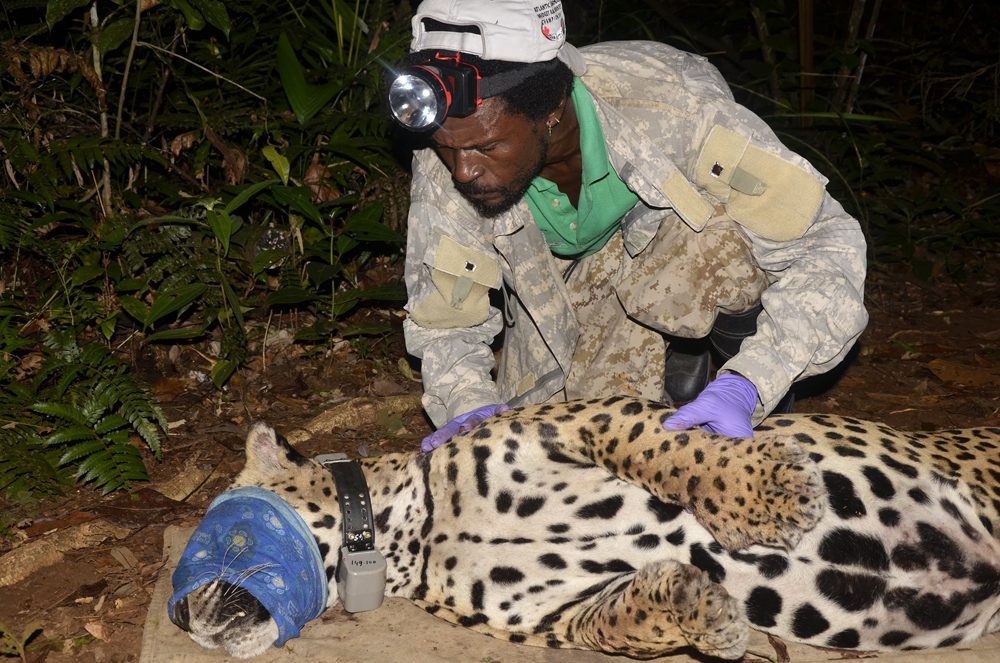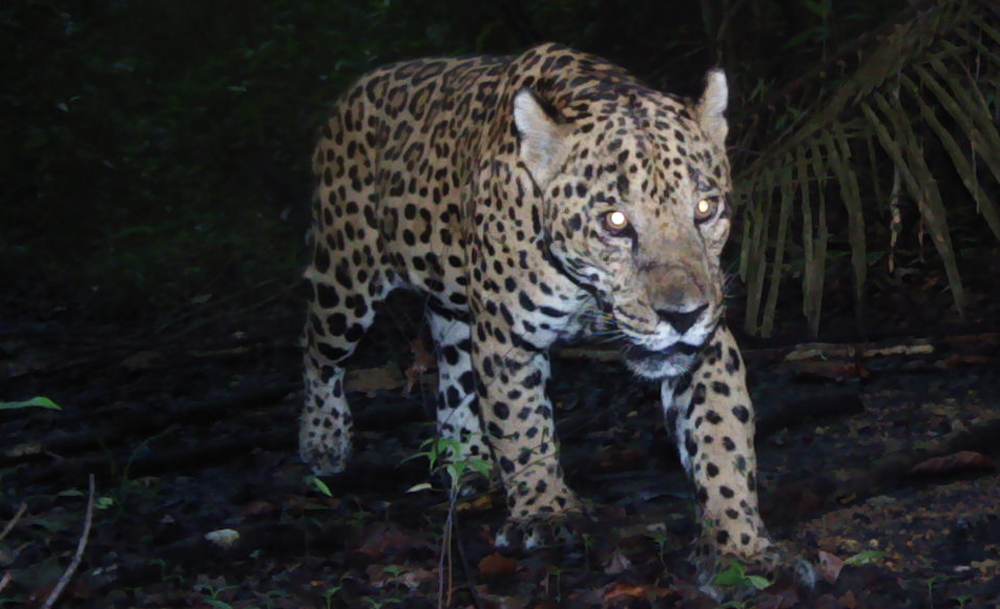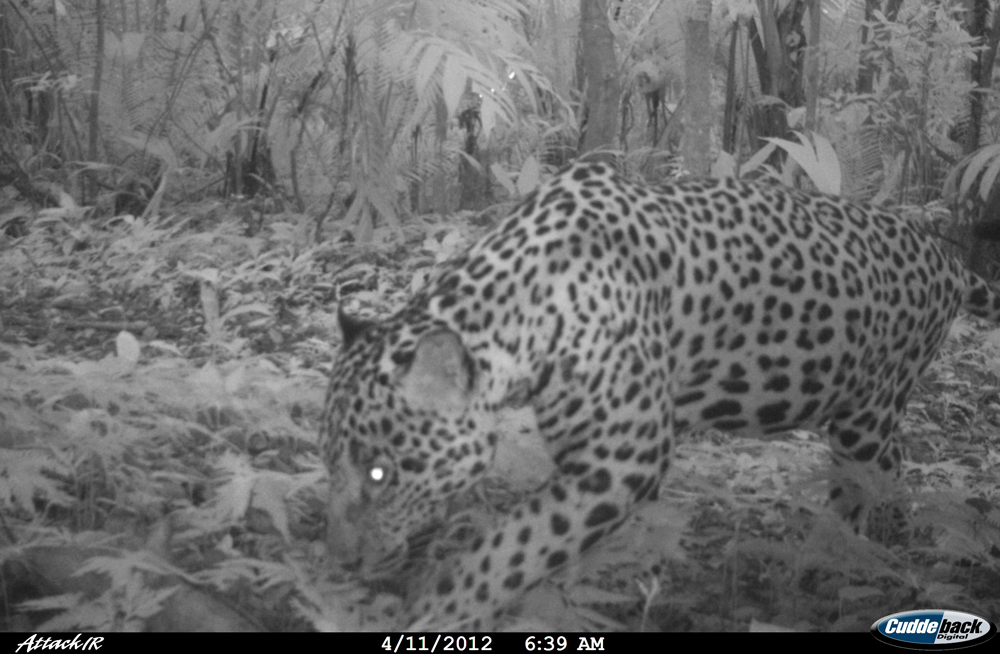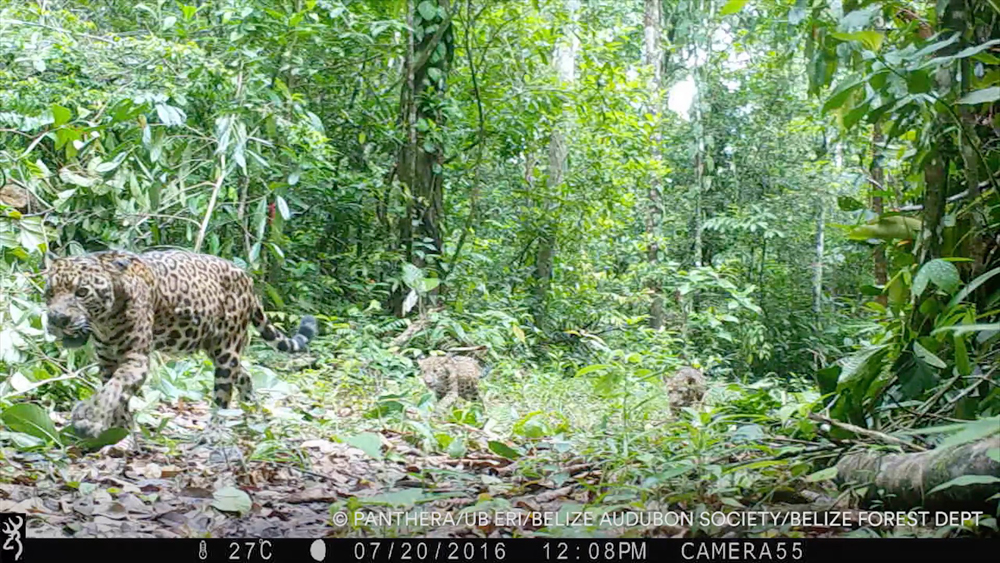Jaguars Interrupted: Counting Big Cats After A Hurricane
Two months after Earl hit Belize, researchers at the world’s first jaguar reserve are still taking stock.
By Vicki Croke
This past summer, within days of gathering spectacular camera-trap footage of a female jaguar and her two tiny cubs sauntering through the Cockscomb Basin Wildlife Sanctuary in Belize, field scientists with Panthera, the global wild cat conservation organization, got the news that a tropical storm was forming and might just come their way.
As the predictions quickly grew dire, Dr. Bart Harmsen, Dr. Rebecca Foster, and their team, did what they could to prepare: In the sanctuary, they relocated their cat cameras out of areas that were likely to flood, and outside the park, where the researchers live, they set about securing houses.
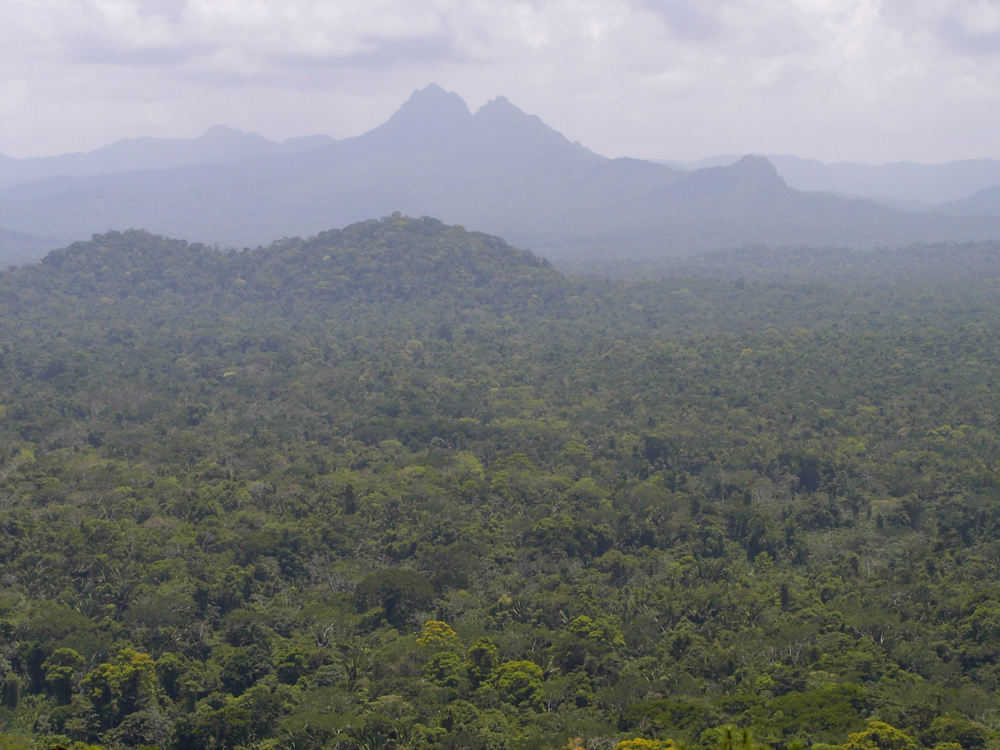
Cockscomb Basin Wildlife Sanctuary–in some ways a paradise for jaguars, who often live into “old age” here. Courtesy: Rebecca Foster/Panthera.
Earl, a massive category 1 hurricane, made landfall in Belize on Thursday, August 4—battering Belize City and causing destruction elsewhere—including the 190-square-mile jaguar reserve. The next day, when the storm had passed, the anxious jaguar researchers were told they wouldn’t be allowed back into the park until debris had been cleared from the entrance.
This left plenty of time to worry about several animals. There was that female and her vulnerable cubs—the tiniest the scientists had ever seen in their footage; a beautiful bruiser named Ben (officially M11-8); and many other jaguars—and pumas too— whose life stories had been written in camera trap footage, in the tracks left on the trails, and in some very rare face-to-face encounters with researchers.
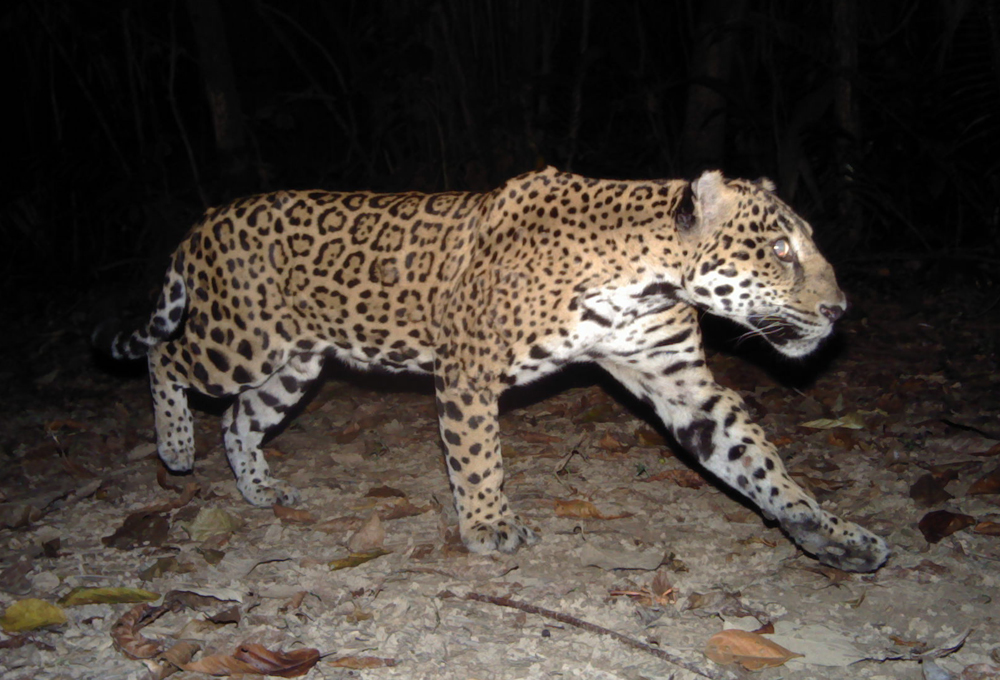
Individual jaguars can be identified by their distinguishing spot patterns. Courtesy: Panthera/UB ERI/Belize Audubon Society.
Over 11 years, Panthera has been able to track 131 jaguars, largely through the thousands of camera trap images of jaguars in which cats can be identified by their distinguishing spot patterns. Some of the jaguars have even become pretty familiar. That’s in part because there’s time to get to know them. The cats here, in the world’s first jaguar reserve, seem to live a long time—regularly making it into what is considered old age for wild jaguars. Panthera reports that half the males in 2011 were older than 10, and one male in the park is now 14.
For the researchers, the possibility of loss was very real. So that weekend, when they were given the all-clear, the Panthera team rushed back into the jungle to check cameras and search for signs of the cats.
- Ben the jaguar and the late Arturo ‘Ben’ Ramos. Courtesy: Joares May Jr./Panthera.
- Ben passing potential trap site in 2014. Courtesy: Panthera/UB ERI/Belize Audubon Society.
- Young Ben in 2012. Courtesy: Panthera/UB ERI/Belize Audubon Society.
- A mother jaguar and cubs in July, 2016. Courtesy: Panthera/UB ERI/Belize Audubon Society.
As Harmsen wrote in his blog for Panthera:
Our initial assessment was that the damage was extensive. Just a few days [before], Rebecca and I had walked the trails of the Sanctuary in the shade of a thick canopy of trees. Now, those same trails were in full view of the blazing sun and distant mountain peaks.
Fortunately, our cameras had mostly survived the heavy wind and rain—so we would be able to monitor the effects of the hurricane on wildlife. The initial downloads from the cameras showed that our main resident individuals were still there. Our collared jaguar Ben and Flash the puma were captured walking the trails (or what was left of them), but we were seriously worried about the young mother and her vulnerable cubs. Did they survive? Would the mother still be able to provide for them?
But then Ben—the cat who had always been such a regular for the cameras for the past five years— became a worry again. Though they had seen him on camera trap footage that one time, he soon vanished. Weeks of worried tracking followed. And then, one day, Bart was in the reserve downloading data from the cameras, and as he walked a little ahead of the others in his group something happened. As Harmsen wrote:
I looked at the trail in front of me and there, where nothing had been seconds before, were two jaguars. I hadn’t heard them, because you never hear jaguars—they are stealthy hunters who move through the forest without a sound.
It had been a long time since I‘d seen a jaguar in the wild, and I’d seen two jaguars together only once before—and that time, I was in a car, and it was night. But these two jaguars were standing right in front of me in broad daylight. We all stared at each other, trying to figure out what to do next.
I ran through the scenarios in my mind. Were they a male and a female, ready to mate? Or perhaps they were a mother and a cub; sometimes a male cub is bigger than his mum, even though he’s still completely dependent on her.
After a few seconds I noticed one of them was very big and had to be an adult male. I could see his large muscular head moving around to get a better look at me. Only full grown males have heads that big—I remember being in awe of this when putting the collar on Ben last year.
Footage confirmed the impression. It was Ben—alive and well, and keeping company with a female.
Other footage showed that the mother jaguar and at least one cub had survived. Even now, there’s still hope that the second cub is alive too—perhaps he or she had been with the family, but just outside that camera frame.
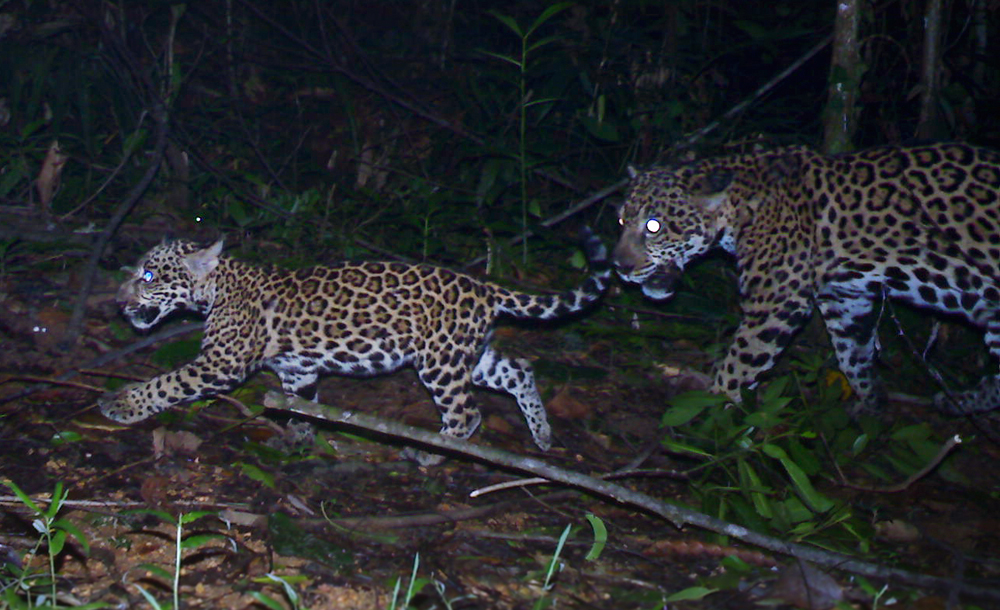
Jaguar mother and cub spotted after the hurricane. Jaguars are secretive, silent, and difficult to count even the best conditions. Courtesy: Panthera/UB ERI/Belize Audubon Society.
Despite a few interruptions, Harmsen and his colleagues plan to continue the work—counting jaguars and reviewing camera trap images as life goes on in Cockscomb:
Other footage revealed pumas courting and jaguars walking trails as they normally do. An older female was joined by her grown male cub. They hadn’t been seen together in a while, so we suspect he went back for reassurance and will leave again soon.
Even though Hurricane Earl reshaped the forest and the ecosystem, wild cat society seems to have survived—though we will need to keep a close eye on these animals. The long-term consequences of this hurricane are unknown, and certain prey populations may collapse due to lack of food.
Cockscomb and the Maya Mountains are supposed to be a stronghold for jaguars, a source population that supplies the lesser wilderness areas with new recruits. Disasters such as this show the fragility of such populations and that we cannot simply count on the few remaining strongholds—there must be resilience and connectivity across jaguar range.
We can’t be sure what will happen next, but we do know this jaguar paradise could be in trouble—and we need to do everything we can to protect it.

